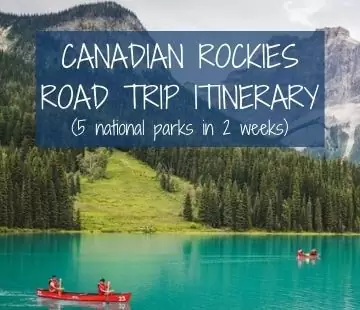Traveling from La Paz to Uyuni is a 540 km journey that can be as comfortable and scenic as you make it. With limited time in Bolivia, we wanted to make the most of it. The result was a scenic train ride with locals, watching lagoons filled with flamingos, quinoa fields and llamas running around.
If you’re traveling to Bolivia, chances are you are going to visit the famous world’s largest Uyuni Salt Flats in the south. Perfect mirror-like reflections on the salt flat with disappearing horizon and many volcanoes over 5,000 meters high are popular for a reason (just look at the picture below).

How to get from La Paz to Uyuni
Whether you climb Huayna Potosi Mountain, bike down the Death Road or visit the jungle, you will find yourself in La Paz. And since all the Salt Flats tours start in a little town Uyuni, we’re going to cover how to get from La Paz to Uyuni (although you already know our favourite). You have three options:
- By train
- By plane
- By bus
Every option has its pros and cons and this article will help you decide which option to choose.

La Paz to Uyuni by train
This is by far the most scenic route and also one of the few possibilities to travel by train in South America which made it our obvious choice.
The train doesn’t start directly in La Paz so your journey will be split in 2 parts:
- Bus from La Paz to Oruro (4 hours)
- Train from Oruro to Uyuni (7 hours), train only runs between these two towns
The train departures from Oruro four days of the week with the schedule:
- 14:30 on Tuesday and Friday
- 19:00 on Wednesday and Saturday
To see the scenery, choose the daytime option on Tickets Bolivia

If you want to choose this option, read how the train journey went for us:
We were waiting to buy the tickets on the day prior to departure but the online booking was suspended. Late bookings can only be made at the train station in Oruro or in the FCA (train company) office in La Paz, which is way out of city centre. In our case we were lucky to purchase tickets through tourist agency in La Paz (but we had to search rigorously to find one).
After we got our train tickets, we had to buy bus tickets to Oruro.

We went to the bus station to purchase bus tickets to Oruro – public buses are good enough for a short journey and not available online (and also cheaper than tourist buses). Several bus companies confirmed that it’s not necessary to buy tickets in advance because there is always space on the bus. Many buses go daily to Oruro and depart every 30 minutes in the morning.
The bus to Oruro was half full when we left La Paz. 4 hours later of a smooth ride we arrived in Oruro. Oruro looked a bit different from La Paz – streets were muddy and dirty, people weren’t wearing traditional colourful clothes and we were sweating in the midday heat. Taxi drivers lined up as soon as the bus arrived and took us to the train station.

Train through Bolivian Altiplano
After a couple hours chilling in the train station, our train arrived and our eyes lit up like little kids seeing Santa Clause. Coming from Europe we were used to traveling by train every week and enjoyed the scenery and thoughts that came while staring out the window. But then we moved to Canada which is all about the cars. We really miss traveling by train and therefore chose this rare option of travel in South America.
The best way to learn about the culture is by observing locals. And a full day of traveling by bus and train across Bolivia was a great way to do that.

The train was so comfortable and familiar I felt like I was teleported to Europe. They played movies on the shared screens but we were staring out the window until dark. We saw flamingos and ducks flying over the huge lagoon as we made our way through the centre of it. Mountains were in the background lining the quinoa fields and llamas funnily staring at the train as they always do. Few villages along the rail tracks had clay houses with a thatched roof. The slow speed of the train allowed us to observe indigenous communities we wouldn’t be able to see otherwise.

The fact that the train had a restaurant car with delicious and very affordable meals was a great bonus. When we arrived in Uyuni around 9 pm, it was pitch black, most of the locals at their homes and tourists wandering the streets.
Watching the beautiful scenery of the Bolivian Altiplano and experiencing daily lives of locals made the trip worth it!

Cost:
- Bus from La Paz to Oruro: 30 bolivianos (4 USD) per person
- Taxi to the train station in Oruro: 25 bolivianos
- Train from Oruro to La Paz: 150 bolivianos per person (22USD) for a train ticket in executive class which was the only available one
It would be cheaper buying online in advance and not through an agency but our desire to travel by train was strong enough that we didn’t mind paying few dollars more. The bus and train ticket together usually cost around 13-22 USD depending if you choose Saloon or Executive class.

La Paz to Uyuni by plane
It’s an obvious choice for the fastest most comfortable route and unsurprisingly it’s also the most expensive one. Starting price for one way flight is 60USD during April (the cheapest month) and only 1 hour long. Amaszonas and BoA airlines offer several daily departures. I imagine seeing all the volcanoes from above must be amazing.

La Paz to Uyuni by bus
More popular option than flying is traveling by bus. It takes around 11 hours on paved roads. Because it’s an overnight bus, you’ll be saving money for accommodation as well. Traveling by bus in Bolivia can be a real pain and dangerous too sometimes. Overcrowded buses and breakdowns are common. Luckily there is an option to taking the cheapest buses often in poor conditions.
An overnight tourist bus has reclining seats, toilets, heating, blankets, snacks and English speaking staff. The price ranges from 15-25USD depending which seat you choose – semi-cama (semi-reclining seats) or cama (fully reclining). It departs daily from La Paz terminal de buses at 8 pm every day and arriving 6 am to Uyuni the next day. Just in time for Salt Flats tour which usually starts around 10-11am.

Search for reputable companies through Tickets Bolivia
Due to deteriorating conditions in the rainy season and quality of roads, the bus service might not be available in March and April. In that case, traveling by train is better option.

Where to stay in Uyuni
The train station is in the middle of the town and a lot of accommodation options are just a short walk away. The town sees many tourists visiting the Salt Flats and offer everything from 7$/night hostels to modern hotels.
Most accommodations include free breakfast. If you’re traveling in colder months, a hotel is a good option because they have heating and hot showers.
The most popular hotels with extensive amenities are:
- Hotel Jardines de Uyuni – check their prices here
- Hotel de Sal Casa Andina – check their prices here
For interaction with fellow travelers, hostels are plentiful. The most popular is:
- Hostal Quinua Dorada – check their prices here

We recommend staying in Uyuni 2 nights. You can go on a sunset tour of the Salt Flats or check out the nearby train cemetery just before sunset (and go on the Salt Flats tour the next day). You will see it on the Salt Flats tour anyway but with hordes of tourists. Locals race on their motorbikes on the plains and you’ll have the popular train cemetery to yourself.
Which route are you going to choose? Let us know in the comments if you have any other tips for traveling in Bolivia.
Spread the word! PIN this to your Pinterest board.













The article was very useful and I appreciated the tips. We are thinking of travelling later in the year or early next year. What your article missed out was the details of availability of the trains for the return journey to La Paz. It would help in firming up the hotel bookings. Could a hotel Travel Desk not help us out with sourcing the tickets. Or is this facility not available in La Paz. Thanks for the input.
I’m not familiar with the return schedule as we’ve only travelled one way and continued from Salt Flats to Chile. We stayed in a hostel in La Paz and they didn’t provide help with booking tickets. I’d recommend asking your hotel, they should have more resources to help you out.
hi – did you take the expreso ferrobus train? trying to book a seat from oruro to uyuni, but t here are no executive seats option. thanks!
Hi Mia, we took the Expreso del Sur train and traveled in executive class only because no other option was available. You can also book Saloon class or try a different day for Executive class.
Hello, this blog post is very useful, thank you so much! I am struggling to book the train from Oruro to Uyuni on internet… so wanted to ask if you could tell me the name of the tourist agency in La Paz that could book it for me, pls. 🙂
@Jennifer @Mia
Hello, this post was indeed very helpful.
We also have difficulty obtaining reliable information online. I think the actual train is not running at the moment, just a “ferrobus”, a bus on rails, I think. Can anyone confirm this definitively?
Looks like Kanoo Tours is offering to purchase train tickets from Oruro to Uyuni.